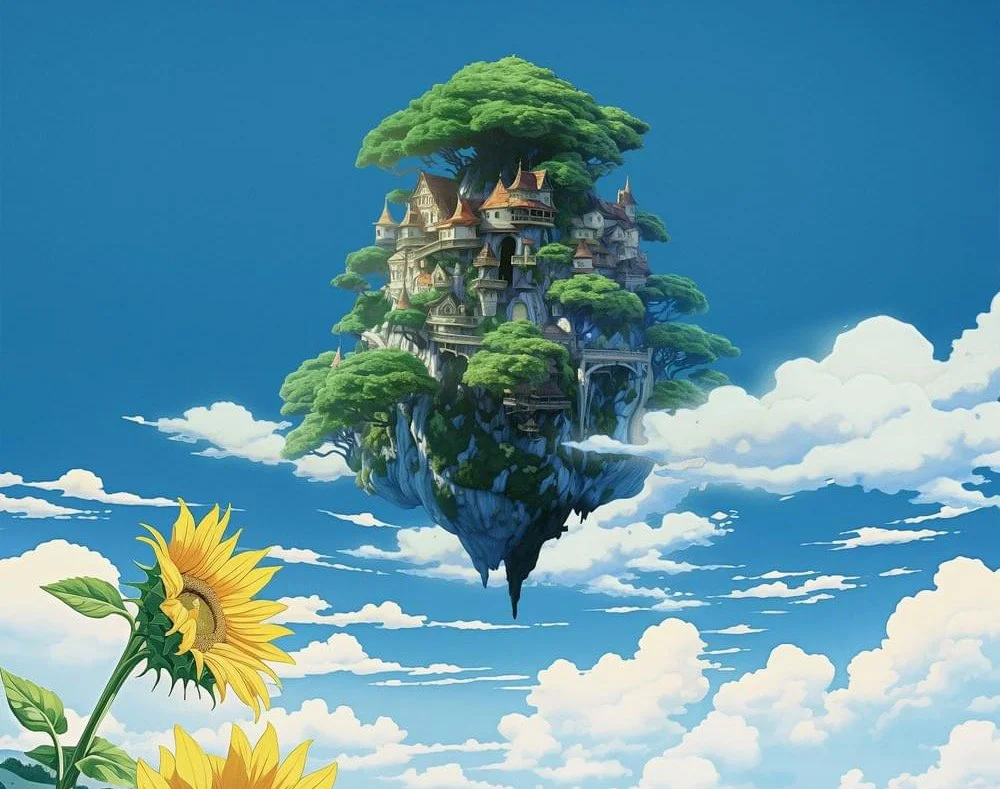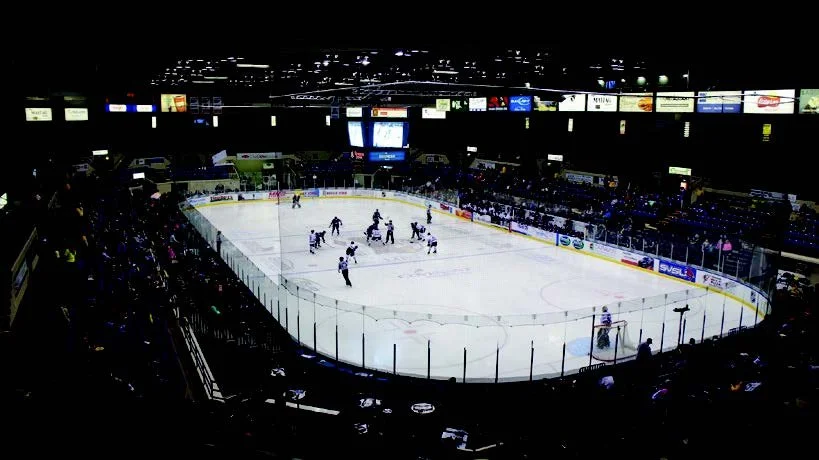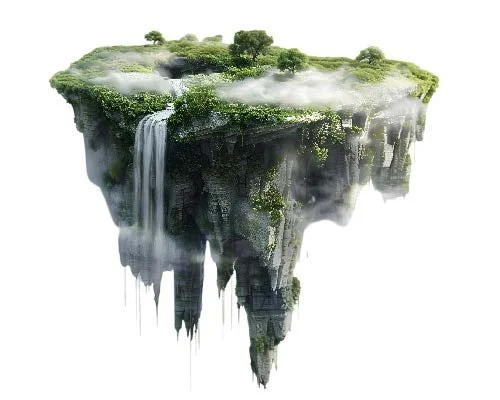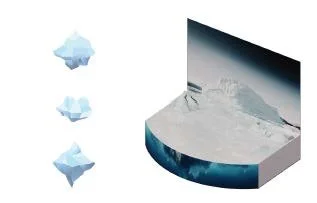
Due to the bulky and complicated structural and mechanical system of the ice rink,
figure skating performances are always just viewed from a high angle.
So when I think of how to bring a fresh experience to the audience by designing a figure skating performance space, changing the viewing angle was my starting point.
Bring Ice Rink to the Stage
This project is inspired by the idea of “floating island” that showed up in many stories and movies such as the Castle in the Sky by Studio Ghibli. It would bring the audience a great visual experience if the figure skater could perform on a stage that is floating in front of their eyes. Elevating the stage with structural elements, even if it needs to be equipped with all the supporting mechanical systems that will sustain an ice rink, is not hard, but making it “floating” might not be as easy. And the naked-eye 3D screen system would be one good solution for that.
The Main Concept - Floating Island
How to achieve floating - Naked Eye 3D Technology
The naked-eye 3d screen is using a parallax barrier technology that makes the images received by people’s left and right eyes deviate. “An opaque layer and a series of precisely spaced slits in front of the 3D naked-eye screen allow each eye to see a different set of pixels, creating a sense of depth and harmony.
Due to the bulky and complicated structural and mechanical system of the ice rink, figure skating performances are always just viewed from a high angle. So when I started to think of how to bring a fresh experience to the audience by designing a figure skating performance space, changing the viewing angle was my starting point.
This project is inspired by the idea of “floating island” that showed up in many stories and movies such as the Castle in the Sky by Studio Ghibli. It would bring the audience a great through visual aberrations in the space.” In this way people will have a more realistic and a 3 dimensional perception of the objects shown on the screen.
I dug into the technical specs of both the ice rink mechanical system and the naked-eye 3D screen system, and modeled a lock up as shown in the right image. A solid concrete wall would be built first, to which the girt system that will be holding the screen panels would be installed. And this wall is also going to take the weight of the two layers of concrete slab and the ice layer above. Insulation with two layers of waterproofing would also be needed to separate both systems and keep the functioning of the screen system. The condenser and related mechanical units could be installed remotely or hidden under the stage. If they are placed under the slab, acoustical measures would be needed to protect the performance from being disturbed by the vibration and noises.
Here are two mock-ups of the stage system I designed.
In the first one, the background image which is in a Monet style is extended into reality seamlessly with the placement of physical florals on the stage. And the river is continued with a projector projecting the water surface texture on the ice surface. This is a common strategy to create atmospheric space in many cultural venues, especially the TeamLab museums.
A peaceful underwater world in a dim light would be presented on the screen and create a sense that the performer is dancing on the thin water surface.
To make this stage setting more interesting, the background screen could change into the scenery of different seasons, the physical planting set up on the stage can also be replaced with a kinetic model that will respond to this change.
The second one goes contrary to the first stage set up. This minimalist stage setting is trying to give the audience a stronger impact of the subjectivity of the theme and let them focus on the performer itself.
The icebergs in the background screen are continued with some physical icebergs’ model placed on the stage, and the naked-eye 3D screen below is matching the underwater part with the icebergs above the water surface.
The iceberg could also be set to move on the stage in response to the figure skaters’ performance.
The third stage brings a forest into the theater and the figure skater would be able to deliver the performance just like in a peaceful pond in a quiet natural setting. The background image shown on the vertical screen is extended into the horizontal stage with the help of physical trees, grass, bushes and fallen leaves placed on the stage.
Different from the previous two mock-ups, this time the projector is not used to give the horizontal surface a texture. A highly reflective surface is used, and the rich and vivid details from the screen or the physical settings would be further amplified with just a simple reflective surface. The naked-eye 3D screen would be presenting the view of an underwater world with lush grass, perfectly matching the whole setting but not being distracting to the audience.
In the whole project,
I would like to address an idea that all sports originated from a more organic and natural life of the ancient people.
It develops with history and becomes more sophisticated and civilized.
But playing a certain sport to a high level requires the athlete to go back to nature and embrace it.













